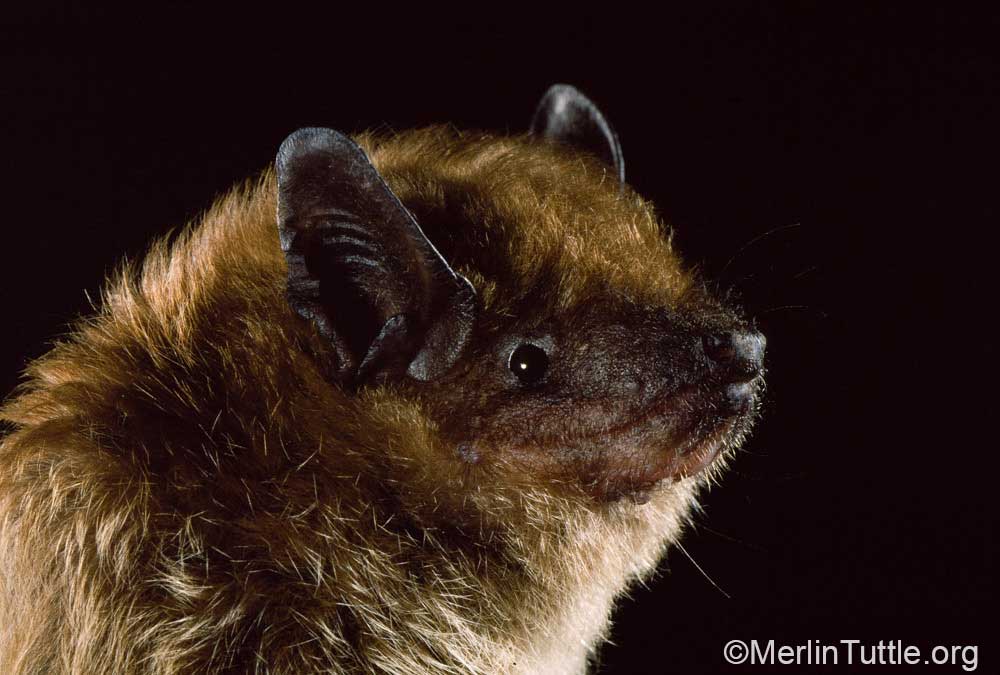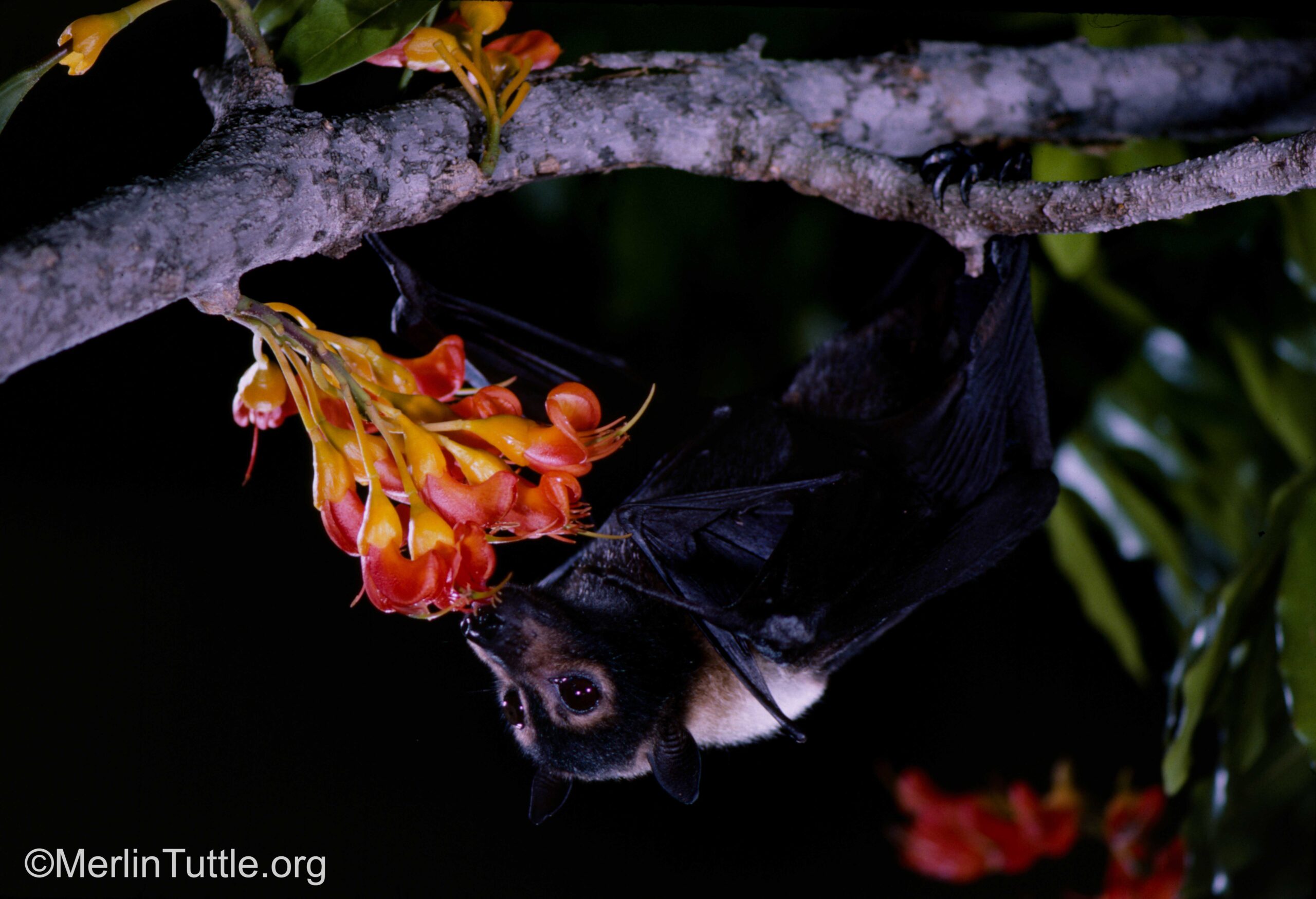The Costs of Bat Decline
Can we afford to lose bats? A recent study by Eyal Frank of the University of Chicago reveals that the dramatic decline in U.S. bat
It’s summertime (in the Northern Hemisphere) and the evening skies are alive with activity. As the sun sets, bugs are flying around and bats are in pursuit. As the weather warms, evening emergences are getting larger and larger. It’s hard not to have bats on the brain! Since many people are thinking of our winged friends more often this time of year, here are some of our favorite summer-related resources all in one place.
Bat House Warnings
If we’re hot, they’re hot! But it may not be what you think. Observations of heat-stressed (sometimes dead) bats associated with bat houses have led to unfortunate speculation that bat houses can become ecological traps that lure bats to their death. While it is true that some bat houses are badly built, sold with false claims, and little (if any) instruction on bat needs — there is NO evidence that poorly constructed bat houses threaten bat survival. Read the full post here.

Bats in Buildings
Bats that enter human living quarters are typically lost youngsters. They are frightened, looking for an escape. Even when sick they normally bite only in self-defense if handled. The greatest risks of injury (for humans or bats) stem from panicked responses, not from the bats themselves.
It is simple to evict an unwanted guest (if you don’t panic, run, and the bat hasn’t disappeared when you return with help). Check out our full guide.
Selecting a Quality Bat House & The Bat House Guide
Since Merlin first introduced bat houses to North America in 1982, one of the most frequently asked questions has been, “Where can I purchase a good bat house?” The next question that always follows is, “How do I know bats will come?”
Get the quick tips here and use The Bat House Guide to research the best spot for your bat house needs. And, if you’re looking for tips on WHERE to purchase a bat house, scroll down to see vendors who qualified under MTBC’s bat house certification program and meet most of our criteria for bat house access and longevity. Read the full post here.
Bats and Mosquito Control
Bats are the primary predators of the vast numbers of insects that fly at night, and some species consume large numbers of mosquitoes when they are available. However, mosquito control is a complex problem that rarely can be solved by a single approach. Individuals of some bat species can capture up to a 1,000 mosquitoes in a single hour, and large colonies can consume amazing quantities. Because mosquitoes do not take evasive action, and are exceptionally easy to capture, bats sometimes appear to prefer them over larger prey. Nursing mothers can eat up to their body weight in insects nightly. Read the full post here.
Rabies in Perspective
Every summer, and especially as we get closer to Halloween, we start to see a spike in needlessly sensational rabies stories featuring exaggerations of truth. Use our resources to share the truth about bats when you encounter a misinformed friend or sensational article. Read more here, and let us help you put rabies in perspective for your communities.

Climate Change and Bats
Mass die-offs of bats and other animals are early warnings of serious environmental stress. In fact, bats are especially relevant indicators. They form the largest, most vulnerable aggregations of any mammal except Homo sapiens. Yet, their importance and plight have long been neglected. Changing temperatures and environments are fair cause for a rise in concern. Listen to our SXSW panel about how animals – like bats – can help us avoid climate fatigue and contribute in meaningful ways. Read our full post here.
Pesticide Addiction and How Bats Can Help
Pesticide addiction is caused by what entomologists refer to as the pesticide treadmill – insect pests rapidly evolve resistance, gradually forcing farmers to increase both the volume and toxicity of poisons to achieve the same results. Simultaneously, because predators of pests have much smaller populations and reproduce slower, they are more effectively poisoned or starved. Remaining pests then flourish in a largely predator-free environment. Most people don’t realize that many of our most feared insect pests are nocturnal and preyed upon by bats. These include disease-carrying mosquitoes and a wide variety of the world’s most costly moth, beetle, and plant-hopper pests. In the U.S. alone, despite greatly reduced numbers, bats still are estimated to save farmers more than 22 billion dollars annually. Read our full post here.
Valuable Services
Beyond pest control, bats also help people all over the world through pollination and seed dispersal. In fact, there are whole industries that rely on bats to pollinate their plants and spread their seeds. Here are just a few examples:
Share the truth about bats: click here to read more.
Plan your visit to see the world-famous Congress Avenue Bridge colony during peak season! The Congress Avenue Bridge bat colony has proven to be invaluable neighbors, providing essential pest control, attracting millions of tourists, all while decorating Austin’s night skies. Thanks to Merlin, these bats are a staple of Austin’s culture, and the “Bat City” is now a world leader in demonstrating harmonious living with bats. We celebrate Austin’s bats and Merlin’s birthday during our annual Merlin Tuttle Day event on August 26, 2024. Tickets are on sale now – come celebrate with us!
At MTBC, it is our mission to share Merlin’s more than 60-year legacy of experience in bat research, conservation, and photography to help educate people about the importance, and many benefits, of bats. Teaching people to live harmoniously with bats has helped MTBC save millions of bats; while protecting public health, economies, and ecosystems worldwide. Whether you’re a curious naturalist, interested biologist, industry professional, or just looking to learn more about bats, our Resources are here to help.
Love our content? Support us by sharing it!
Can we afford to lose bats? A recent study by Eyal Frank of the University of Chicago reveals that the dramatic decline in U.S. bat
Bats are among the most fascinating yet misunderstood creatures in the natural world, and for many conservationists, a single experience can ignite a lifelong passion
Many bat conservationists know that Kasanka National Park in Zambia is an exceptional place for bats, but it is also the place that sparked my
The Kasanka Trust is a non-profit charitable institution, which secures the future of biodiversity in Kasanka National Park in Zambia. They welcome internships for students
2024 © Merlin Tuttle’s Bat Conservation. All rights reserved.
Madelline Mathis has a degree in environmental studies from Rollins College and a passion for wildlife conservation. She is an outstanding nature photographer who has worked extensively with Merlin and other MTBC staff studying and photographing bats in Mozambique, Cuba, Costa Rica, and Texas. Following college graduation, she was employed as an environmental specialist for the Florida Department of Environmental Protection. She subsequently founded the Florida chapter of the International DarkSky Association and currently serves on the board of DarkSky Texas. She also serves on the board of Houston Wilderness and was appointed to the Austin Water Resource Community Planning Task Force.
Michael Lazari Karapetian has over twenty years of investment management experience. He has a degree in business management, is a certified NBA agent, and gained early experience as a money manager for the Bank of America where he established model portfolios for high-net-worth clients. In 2003 he founded Lazari Capital Management, Inc. and Lazari Asset Management, Inc. He is President and CIO of both and manages over a half a billion in assets. In his personal time he champions philanthropic causes. He serves on the board of Moravian College and has a strong affinity for wildlife, both funding and volunteering on behalf of endangered species.